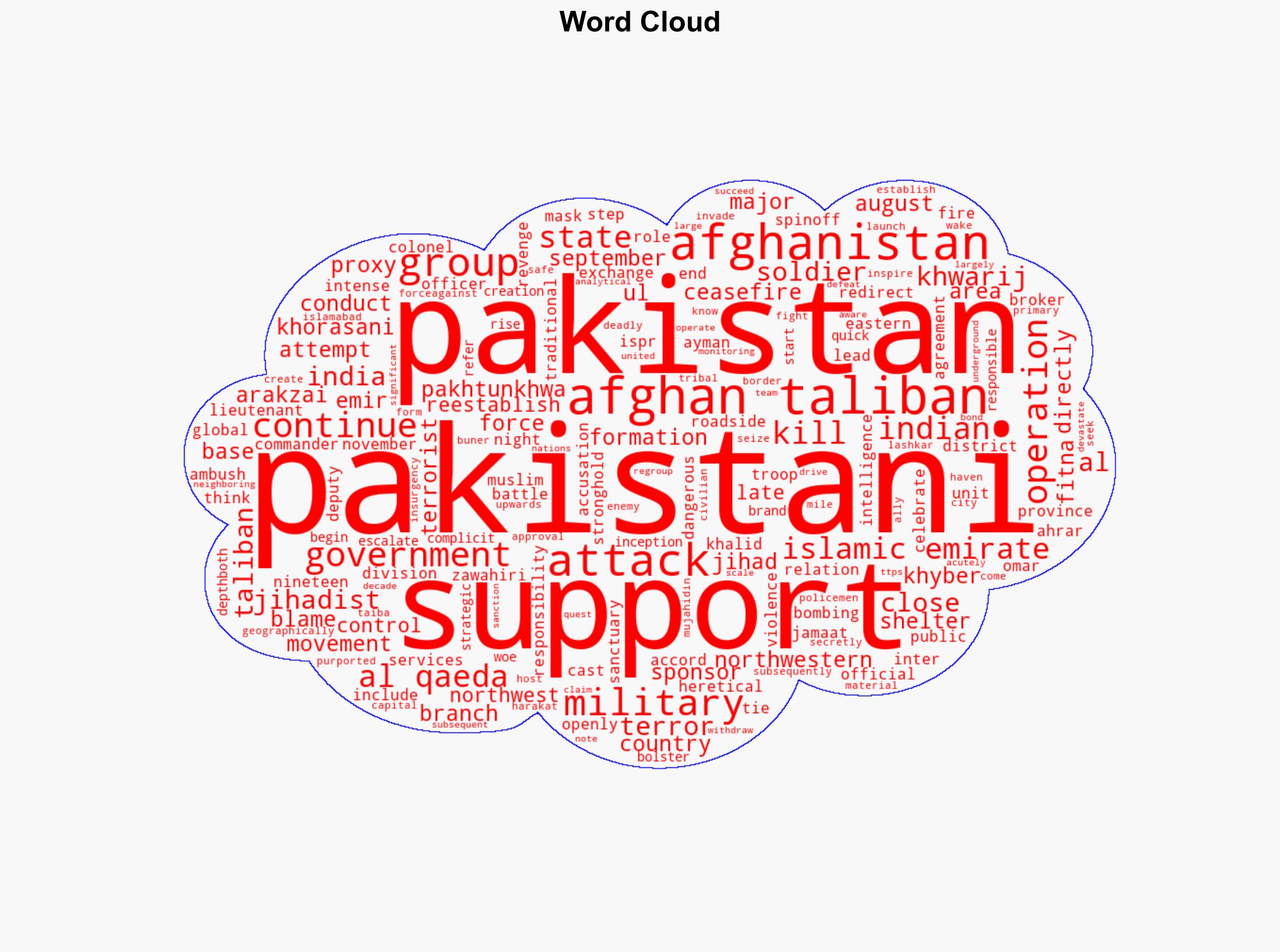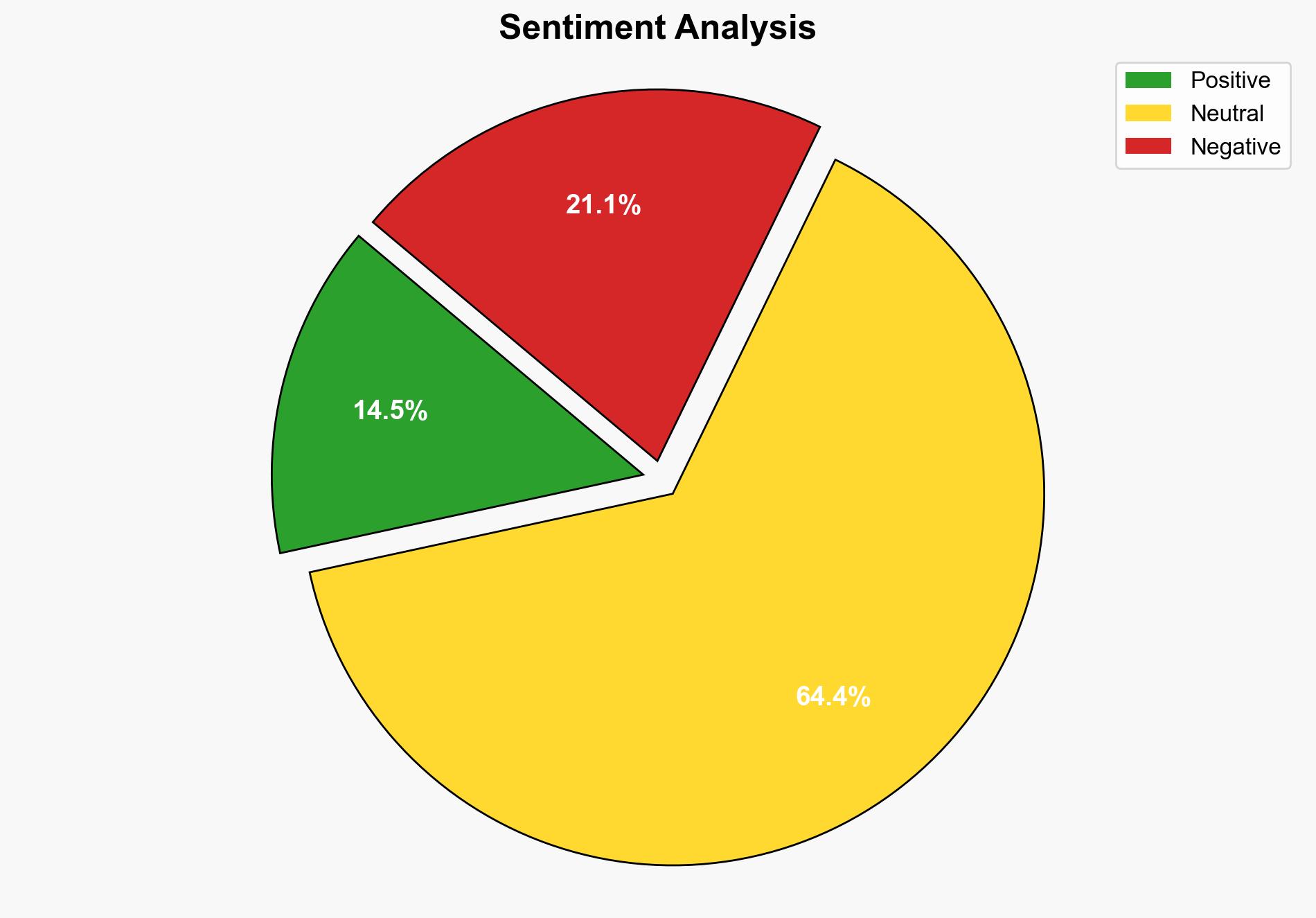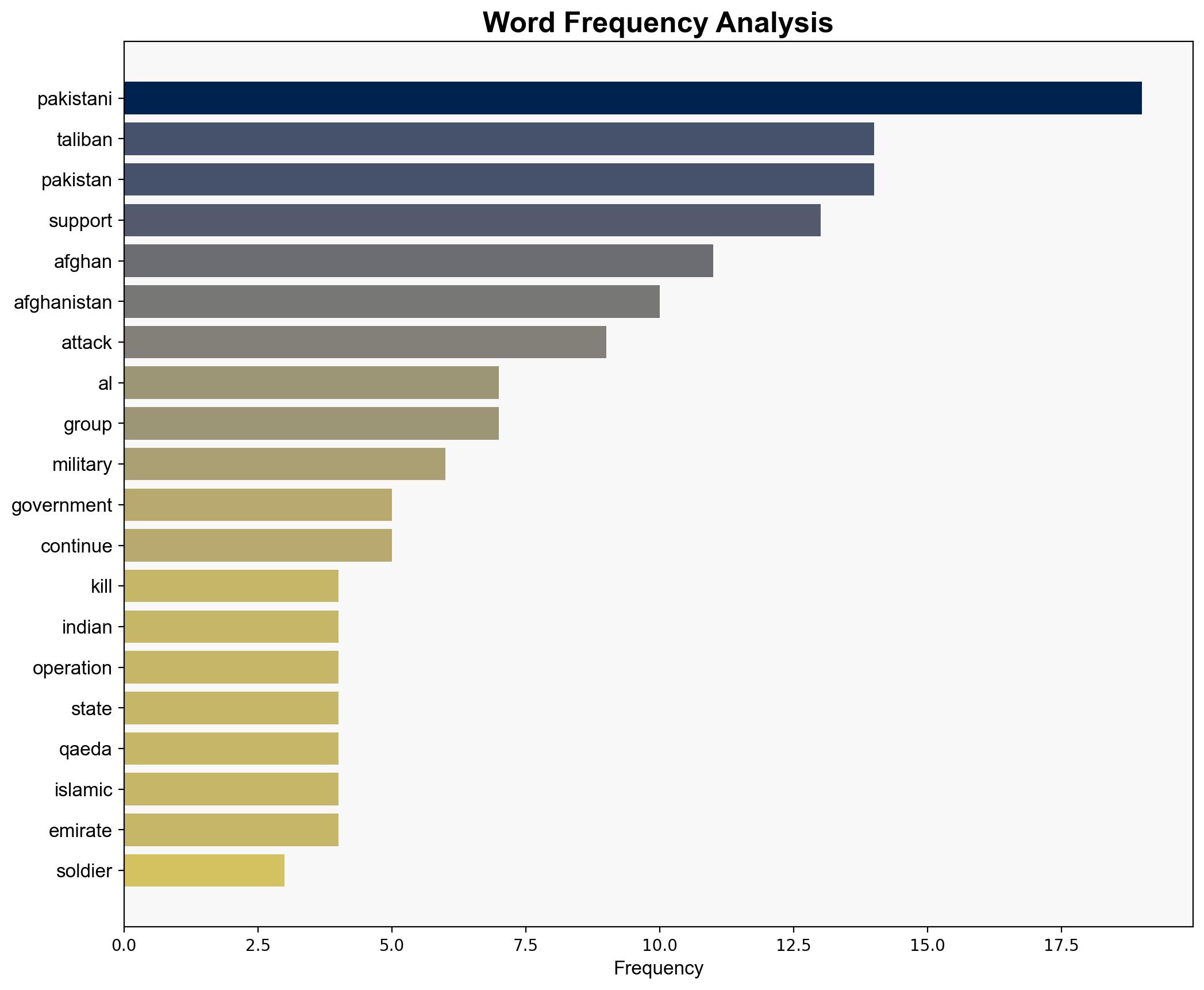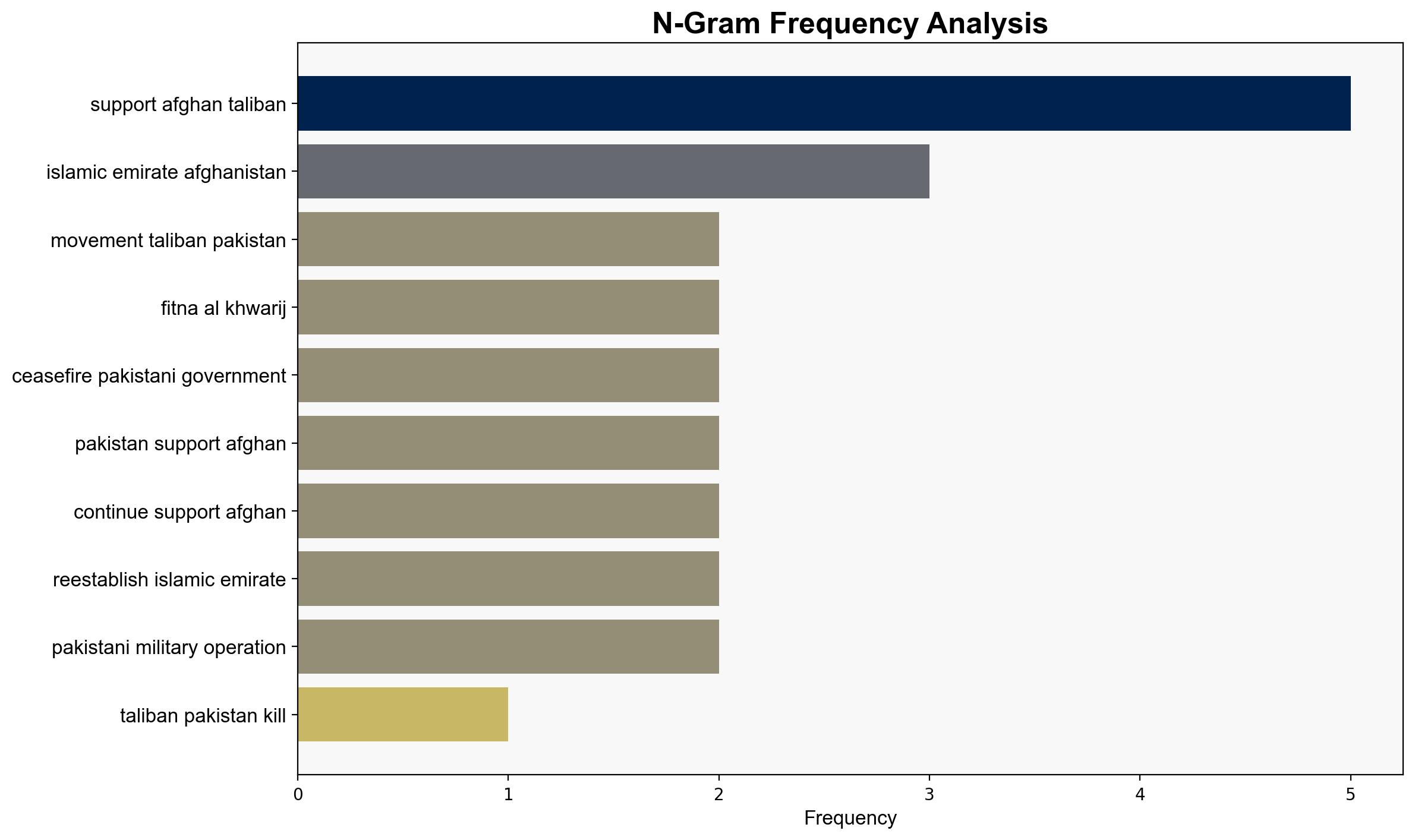Analysis Pakistan attempts to shift blame for TTP attacks toward India – Longwarjournal.org
Published on: 2025-10-08
Intelligence Report: Analysis Pakistan attempts to shift blame for TTP attacks toward India – Longwarjournal.org
1. BLUF (Bottom Line Up Front)
The most supported hypothesis is that Pakistan is attempting to deflect attention from its own involvement with the Taliban by blaming India for TTP attacks. This is supported by historical patterns of Pakistan’s strategic use of proxy groups. Confidence level: Moderate. Recommended action: Increase intelligence sharing with regional allies to monitor Pakistan’s activities and counter misinformation campaigns.
2. Competing Hypotheses
1. **Hypothesis A**: Pakistan is genuinely convinced that India is supporting TTP attacks to destabilize Pakistan. This belief is based on intelligence gathered by Pakistan’s military and government.
2. **Hypothesis B**: Pakistan is using India as a scapegoat to mask its own complicity in supporting the Taliban and related groups, thereby deflecting international criticism and internal dissent.
Structured Analytic Technique: Using ACH 2.0, Hypothesis B is better supported due to historical evidence of Pakistan’s strategic depth policy and its documented support for the Afghan Taliban, which aligns with its geopolitical goals against India.
3. Key Assumptions and Red Flags
– **Assumptions**: Hypothesis A assumes that Pakistan’s intelligence is accurate and unbiased. Hypothesis B assumes Pakistan’s historical behavior is a reliable predictor of current actions.
– **Red Flags**: Lack of independent verification of Pakistan’s claims against India. Historical bias in Pakistan’s narrative against India.
– **Blind Spots**: Potential over-reliance on historical patterns without considering new geopolitical dynamics.
4. Implications and Strategic Risks
– **Patterns**: Continued use of proxy groups by Pakistan could destabilize the region and provoke a stronger response from India.
– **Cascading Threats**: Escalation of tensions between India and Pakistan, potentially involving other regional players.
– **Economic Risks**: Increased instability could deter foreign investment in the region.
– **Geopolitical Risks**: Potential for increased involvement of global powers in South Asian affairs.
5. Recommendations and Outlook
- Enhance intelligence collaboration with India and Afghanistan to verify claims and counter misinformation.
- Encourage diplomatic engagement to de-escalate tensions between India and Pakistan.
- Scenario Projections:
- Best: Diplomatic resolution and reduced proxy warfare.
- Worst: Escalation into direct military conflict between India and Pakistan.
- Most Likely: Continued low-intensity conflict with periodic diplomatic interventions.
6. Key Individuals and Entities
– Omar Khalid Khorasani
– Ayman al-Zawahiri
– Jamaat ul Ahrar
7. Thematic Tags
national security threats, counter-terrorism, regional focus




